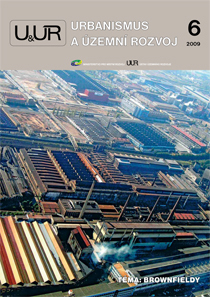
Bílina Nord Mine; An Open Air Multi functional Museum, The Starting Points and Principles of a Spatial Study, by Tomáš Hájek, Kristina Langarová and Barbora Matáková
An unused territory of extraordinary historical value, and one of a few non-cultivated in the area, is to be found in direct contact with the western edge of the still active mine of Bílina. This text describes the elements and basic procedures of a project searching for new functional contents of this territory. One basic feature of the solution is multi functionality, but the primary and unifying function is that of memory. Based on the theoretic procedures of monument preservation, the presented method was developed to evoke the destiny of the villages which disappeared due to coal mining and was actually meant to remember the whole cultural landscape, with small monuments like wayside shrines and crosses, chapels and memorials. The first step is a thorough passportization of the monument values in the defined hierarchy of landscape spaces. Also contributing to the solution, the ways of passportization were described, as was the assessment of the composition values of the territory, its perceptional and visual characteristics, and the vegetation cover.
Analysing the Situation and the Development Options for Brno’s Eastern Inner Part, by Antonín Vaishar, Jana Zapletalová and Vilém Walter
This article analyses the development options of one of the worse inner parts of the city of Brno, east of the centre and the railway station, formerly concentrating factories, technical infrastructure, workers’ quarters and environmental problems. After 1990 it became a neighbourhood of problematic population, a gypsy ghetto grew up, and the problem of brownfields was increasing. The image of the territory is bad, with the problems of social exclusion still on the increase. Currently, this part of the city is subject to selective changes related to gentrification. The empirical part of this contribution presents some specific examples of such changes. Though the social differentiation under the conditions of market economy is growing, the territory as a whole has some development potential, especially in view of its position in reference to the city centre. Another important question is where the low-income population from the gentrified areas is forced to go.
Problems of the Development of Czech Regions: Comparing Statistical Data, SWOT Analyses and the Opinions of Public Administration Representatives, by Jan Pileček & Miloš Červený
This contribution is focusing on regional development, namely the determination of the problems and impediments in the development of Czech regions. The evaluation is based on three different resources: statistical data, SWOT analyses as contained in the concept documents of regions, and the opinions of public administration representatives. The main outcome of the contribution is an overview diagram of the identified development problems and impediments, subdivided per particular regions.
The State Regulation Committee and the Development of Prague, by Jiří Kupka
It is evident that the construction development of large settlements must be conceptually coordinated with that of the surrounding locations, so that the originating conglomeration and all of its background is a working organism. A historic example of such coordination at the level of cities and their interest space is the State Regulation Committee for Prague and the Vicinity, significantly affecting the capital’s development in the interwar period and inspirational even today when there is no institution of such powers. Though there may be various criticism about the Committee’s actions, and some of its intents could not be materialized, its activities make an important milestone in the development of the young republic’s capital.
Providing Spatial Data by the Czech Geological Survey – Geofond, by Vít Šrupl & Jaroslav Novák
The article presents the activities of the Czech Geological Survey – Geofond (CGS – Geofond) in providing spatial data. The opening part describes the relevant legislative framework for the provision of spatial data and the basic characteristics of CGS – Geofond’s activities, followed by a detailed description of spatial data provision as performed by CGS – Geofond. Finally, a list of CGS – Geofond’s web applications is presented.